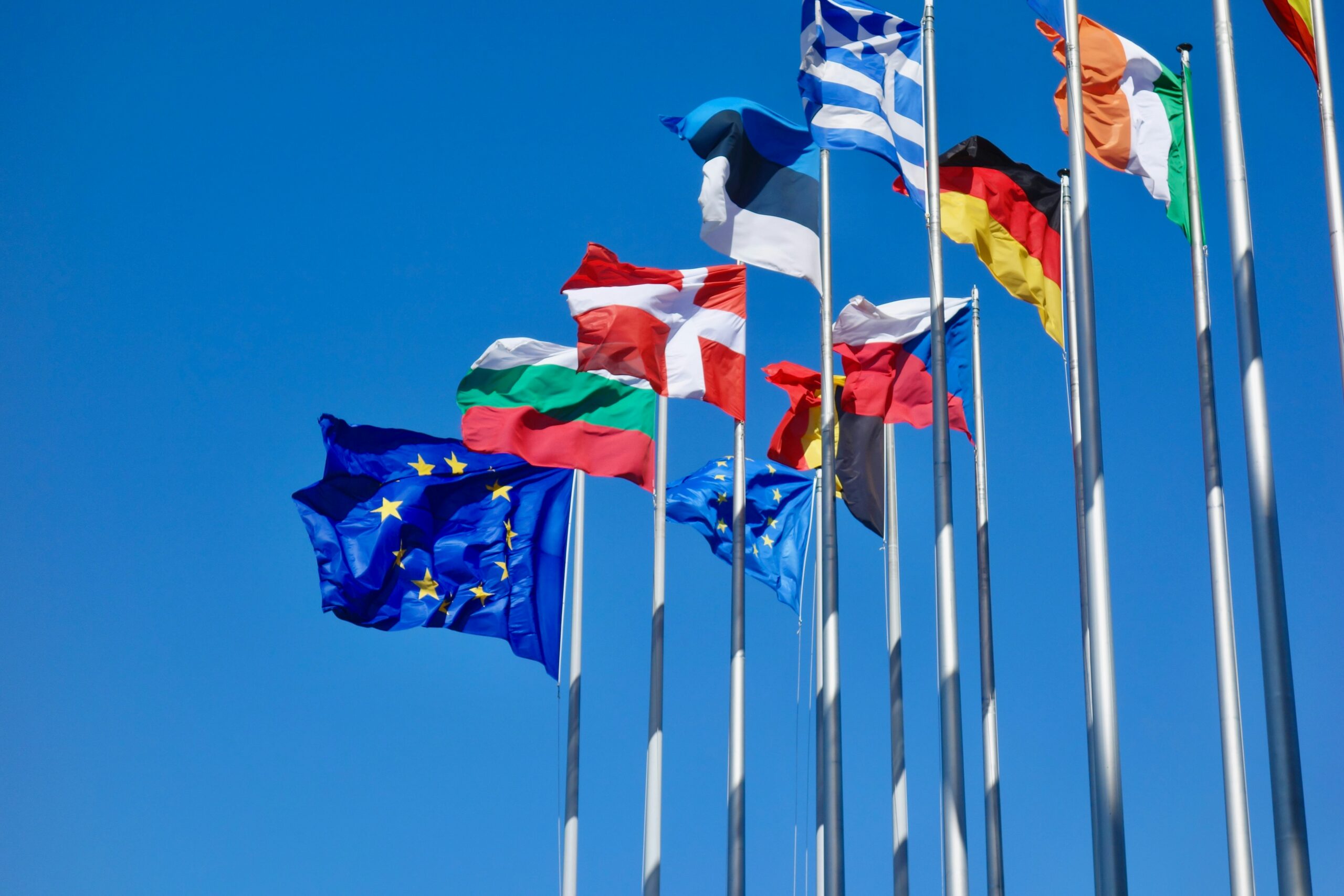Same product, but different country: Why one-size-fits-all doesn’t work in the EU
Written by
Kinga EdwardsPublished on
Why one-size-fits-all doesn’t work in the EU. Learn valuable insights and transform your approach.

At first glance, the EU looks like one big happy marketplace. A single currency in many places, open borders, free trade. Sounds like the perfect recipe for scaling a product fast. But, the moment you try to run one blanket campaign for 27 different countries, cracks start showing, and you begin to understand that one-size-fits-all doesn’t work in the EU.
So what, you think that translating your website or sticking a flag on an ad would help? Not necessary. You need to learn how people buy, what they trust, and the little details that make them say “yes” or close the tab.
Let’s dig into why brands that treat Europe as one big market often fail — and what you can do instead.
So… why? Why one-size-fits-all doesn’t work in the EU?
Well, a unified strategy feels tempting. You save money, you get your campaigns out faster, and the spreadsheets look cleaner.
But this shortcut often ends up being expensive in the long run.
Think about it. When a company rolls out one global ad without changes, they risk three big problems:
- cultural disconnect,
- language mistakes,
- and missed opportunities.
Cultural disconnect is the first landmine. What works in Spain might feel awkward in Finland. Humor, images, and even smaller details don’t carry the same meaning everywhere.
For example, white is linked with purity in Germany but can be associated with mourning in some other cultures. Now imagine putting that color front and center in your campaign — you might send the wrong signal without realizing it.
Then there are the language fails. Literal translation rarely captures the spirit of a slogan. Pepsi learned this the hard way when their slogan “Come alive with the Pepsi generation” got translated in China as “Pepsi brings your ancestors back from the grave”. Different context, different outcome.
Now imagine something similar in Europe, where dozens of languages and dialects coexist.
And finally, the biggest hit: missed market opportunities. A campaign that feels flat reduces engagement and leaves space for competitors to step in with content that actually resonates.
Let’s see the reasons behind why one-size-fits-all doesn’t work in the EU.
#1 Culture shifts

We know shopping can be really emotional. And emotions are shaped by culture. That’s why cultural differences in EU marketing are make-or-break factors.
Take humor as an example.
- A playful ad that gets laughs in the UK may look unprofessional in Germany, where trust and reliability often outweigh humor.
- In Italy, exaggeration and passion are part of the culture, so a dramatic, flashy ad can perform well.
- But use the same tone in the Netherlands, and you risk sounding over the top.
Colors tell another story.
- Red may grab attention everywhere, but it also signals “sale” and the Christmas season.
- Or green – it works beautifully for eco-conscious campaigns but might not stand out in markets where every other brand is already “green.”
Even product packaging carries weight.
- Germans are famously detail-oriented buyers. They’ll check ingredients, labels, and certifications. If something feels unclear, they hesitate.
- In contrast, southern European buyers might care more about how the product looks and whether it feels stylish on the shelf.
And EU consumers notice when a brand takes the time to adapt. Coca-Cola nailed this with their famous “Share a Coke” campaign. Instead of printing the same global slogan everywhere, they swapped it out for popular first names in each country. In Germany, you saw “Lukas” or “Anna.” In France, “Julien” or “Camille.”
The result? Record-breaking sales and a flood of user-generated content.
So yes, one-size-fits-all doesn’t work in the EU.
People don’t just want a product; they want a product that feels like it belongs to them.
#2 Regulations, payments, and policies
Now let’s move away from emotions for a moment and look at the cold, practical stuff. Because another reason one-size-fits-all doesn’t work in the EU is paperwork, policies, and payment methods.
Every country has its own consumer rights framework. Return policies, warranty expectations, even cooling-off periods vary across Europe. In Germany, customers have strong protection laws and expect hassle-free returns within 14 days. Try offering stricter terms, and you’ll look untrustworthy. Plus, buyers expect transparency in product labeling and pricing — no hidden costs. Ignore this, and you risk legal trouble, not just bad reviews.
Payments are another big trap. Sure, credit cards work across borders, but in practice, EU shoppers rely heavily on country-specific payment systems. Germans love Sofort and PayPal. In France, Carte Bancaire dominates. In Poland, the fast-growing BLIK system is the go-to choice for younger generations. In the Netherlands, iDEAL is the standard. If your checkout only offers Visa and Mastercard, you’re excluding a huge chunk of buyers.

And regulations go even deeper.
Selling electronics? Each country might enforce slightly different safety standards. Running ads? GDPR compliance isn’t optional. Even marketing personalization must follow strict consent rules — and interpretations of those rules differ between markets.
It’s not glamorous, but this is why promoting e-commerce in DACH and beyond requires careful planning. You need to show that you respect consumer rights, meet payment preferences, and operate within each country’s framework.
Otherwise, shoppers won’t just skip your site.
#3 Content marketing
Ever noticed how a campaign that dominates in one country falls flat in another? That’s the content trap. Not because your product is bad, but because the particular message format doesn’t align with how people there consume media.
In southern Europe, storytelling often thrives on emotion and visuals. Think of Italian ads packed with color, music, and family vibes. Move north to Germany, and the same dramatic style might feel too much. German consumers usually expect just clear information — details, benefits, and proof.
Language is another major pitfall. Translating your campaign isn’t enough. Direct translation often strips away meaning or, worse, introduces awkward phrases. Cultural nuance makes or breaks your content. A simple tweak in phrasing, imagery, or even humor can decide whether people hit “buy” or scroll away.
And let’s not forget influencers. In Poland or the Czech Republic, micro-influencers with smaller but loyal communities often deliver stronger ROI than big celebrity endorsements. In France, working with lifestyle YouTubers can spark interest, while in Germany, professional LinkedIn creators might be more effective for B2B brands.
Trying to apply the same influencer strategy everywhere is another proof that one-size-fits-all doesn’t work in the EU.
#4 Personalization
Here’s something every e-commerce marketer should pin on their wall: personalization works. But not generic personalization — not the same “Hello [first name]” in every market. In Europe, personalization has to go deeper.
Localized campaigns consistently see higher engagement and conversion rates. That’s because they feel like they’re speaking to the person in their own language, culture, and habits.
For example, a Dutch customer who sees product sizes in centimeters, local payment options like iDEAL, and delivery promises aligned with PostNL will trust you more. The same customer, shown an ad in English with US dollar prices, might think, “This brand isn’t for me.” And no, it’s not because they dislike your product. Your campaign just didn’t feel built for them.
Promoting e-commerce in DACH is a great example here. In Germany, Switzerland, and Austria, users expect precision. They’ll check delivery dates, product specifications, and return policies before clicking buy. If your campaign doesn’t show that detail upfront, it feels incomplete. In contrast, campaigns in southern Europe may thrive with lifestyle storytelling first, and details second.
Personalization must show customers that you respect their habits and values.
#5 Automation and tech

At this point, you might be thinking, “Okay, sounds great — but how do I scale this across 27 countries without going broke?” Here’s the good news: automation and AI-driven outreach tools are catching up fast.
Modern e-commerce platforms let you adjust pricing, language, and product feeds by region automatically. Hard work is done, and after that, you can cooperate with language-specific specialists to polish it. Moreover, ads can now be split-tested by country, not just by campaign. And marketing automation systems can segment customers based on browsing behavior, payment preference, or even cultural seasonality.
For example, in 2010, running a localized campaign in five EU countries would have cost a fortune in time and manpower. But in 2025, smart platforms can handle most of the heavy lifting. You can still add the human layer — the cultural insight, the brand personality — while letting tools manage the repetitive stuff.
But here’s the trap to avoid: don’t confuse automation with standardization. Automation helps you scale personalized experiences. Standardization tries to paste the same thing everywhere.
What to avoid when promoting e-commerce in the EU
Let’s flip the perspective for a moment and look at the common mistakes. Because sometimes it’s easier to understand/learn from the pitfalls than the wins.
- Skipping market research. Too many brands assume what works in the US or Asia will just work in Europe. Spoiler: it doesn’t. Shoppers here expect tailored experiences.
- Underestimating language depth. Google Translate campaigns don’t cut it. Customers can spot a poor translation instantly — and it damages trust.
- Ignoring payment preferences. As mentioned earlier, offering credit card only in Germany is like shutting the door on half your market.
- Uniform pricing across borders. What looks like fair pricing in one country can feel overpriced in another. Local economic realities matter.
- Forgetting about regulations. GDPR, consumer rights, product labeling… one mistake here, and your campaign might not just fail — it could get fined.
These traps are why brands keep proving that one-size-fits-all doesn’t work in the EU. A lack of detail here isn’t just a missed opportunity — it’s often a direct roadblock to sales.
The last takeaway
This is the core lesson: one-size-fits-all doesn’t work in the EU.
Success here doesn’t come from blasting the same content across borders. It comes from adapting the right details while keeping your brand consistent. That balance is what makes European e-commerce both challenging and rewarding.
So, how do you pull all this together?
The answer is smart trust + cultural fit.
Smart trust means giving customers reasons to believe in you right away. Clear returns. Recognizable payment systems. Transparent shipping policies. Certifications or security logos where relevant. These details reduce friction and hesitation.
Cultural fit means shaping your message so it feels natural in each market. Sometimes that’s in the imagery. Sometimes in the language. Sometimes in the channel you choose.
Put them together, and you’ve got campaigns that don’t just reach people — they convert them. Because they feel safe, familiar, and relevant.
***


